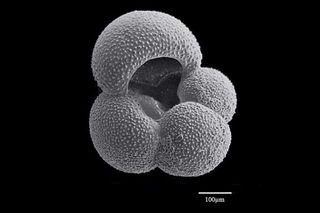Earth's ancient climate warns that we need to take urgent action, study suggests
"If we allow fossil fuel burning to continue to grow, our grandchildren may experience CO2 levels that haven't been seen on Earth for around 50 million years, a time when crocodiles roamed the Arctic," lead researcher James Rae said.

Scientists looked into Earth's ancient history and found that it would take serious action in reducing fossil fuel emissions to prevent our climate from reaching prehistoric warming levels.
An international team of researchers has peered into the past to piece together the most complete history to date of carbon dioxide (CO2) levels on Earth over the last 66 million years in a new study. With this work, they aimed to bolster our understanding of the link between CO2 and climate, show how things have really changed since the time when dinosaurs last walked planet Earth and look to Earth's future as climate change continues to threaten our planets and its inhabitants.
With this study, the team showed how, without a significant reduction in fossil fuel emissions, Earth will soon reach CO2 levels as high as they were about 50 million years ago.
Related: 2020 ties record for the hottest year ever, NASA analysis shows
"If we allow fossil fuel burning to continue to grow, our grandchildren may experience CO2 levels that haven't been seen on Earth for around 50 million years, a time when crocodiles roamed the Arctic," lead researcher James Rae, a researcher at the University of St. Andrews School of Earth and Environmental Sciences in Scotland, said in a statement.
"CO2 has transformed the face of our planet before," Rae said, and "unless we cut emissions as quickly as possible, it will do it again."
In this study, which was published Monday (May 31) in the journal the Annual Review of Earth and Planetary Sciences, the team analyzed data taken over the last 15 years. This data came from previous research that took samples of ancient mud from the deep-sea floor.
Get the Space.com Newsletter
Breaking space news, the latest updates on rocket launches, skywatching events and more!
These ancient mud cores contained microscopic fossils and molecules that accumulated over time. These samples contain preserved information about CO2 levels and climate conditions from the past.
So, by looking at these records of ancient climate history, the team was able to map out CO2 levels over time. This allowed them to compare modern-day CO2 levels with prehistoric levels and get a sense of what our world might look like if we return to these extreme climate conditions.
"For instance," Rae said, "the last time CO2 was as high as it is today, enough ice melted to raise sea level by 20 meters [66 feet], and it was warm enough for beech trees to grow on Antarctica."
Email Chelsea Gohd at cgohd@space.com or follow her on Twitter @chelsea_gohd. Follow us on Twitter @Spacedotcom and on Facebook.
Join our Space Forums to keep talking space on the latest missions, night sky and more! And if you have a news tip, correction or comment, let us know at: community@space.com.

Chelsea “Foxanne” Gohd joined Space.com in 2018 and is now a Senior Writer, writing about everything from climate change to planetary science and human spaceflight in both articles and on-camera in videos. With a degree in Public Health and biological sciences, Chelsea has written and worked for institutions including the American Museum of Natural History, Scientific American, Discover Magazine Blog, Astronomy Magazine and Live Science. When not writing, editing or filming something space-y, Chelsea "Foxanne" Gohd is writing music and performing as Foxanne, even launching a song to space in 2021 with Inspiration4. You can follow her on Twitter @chelsea_gohd and @foxannemusic.
